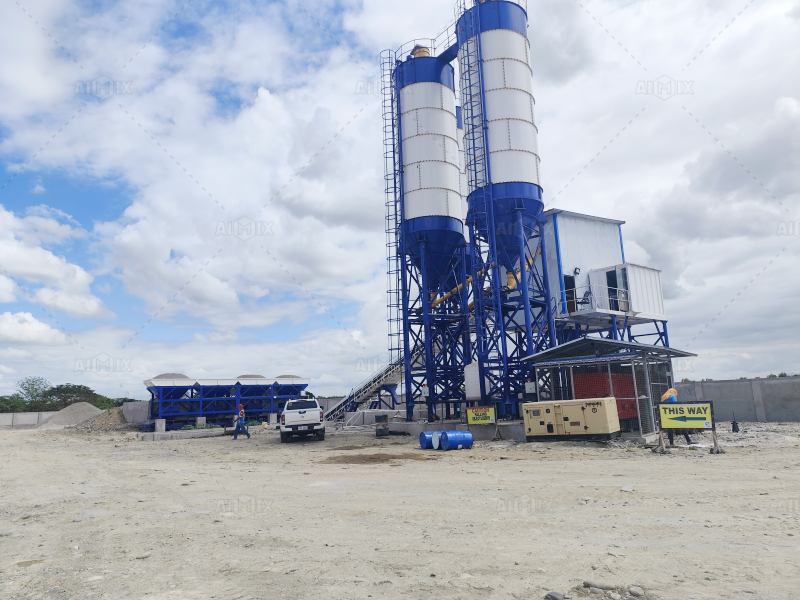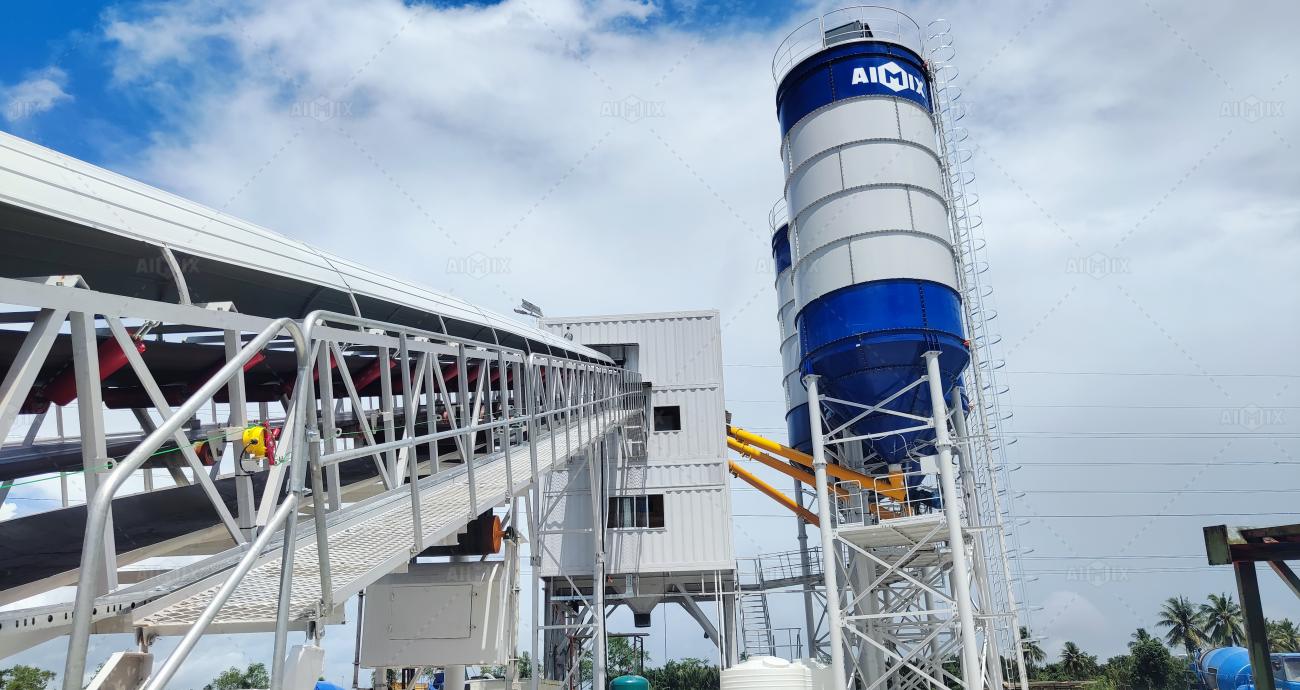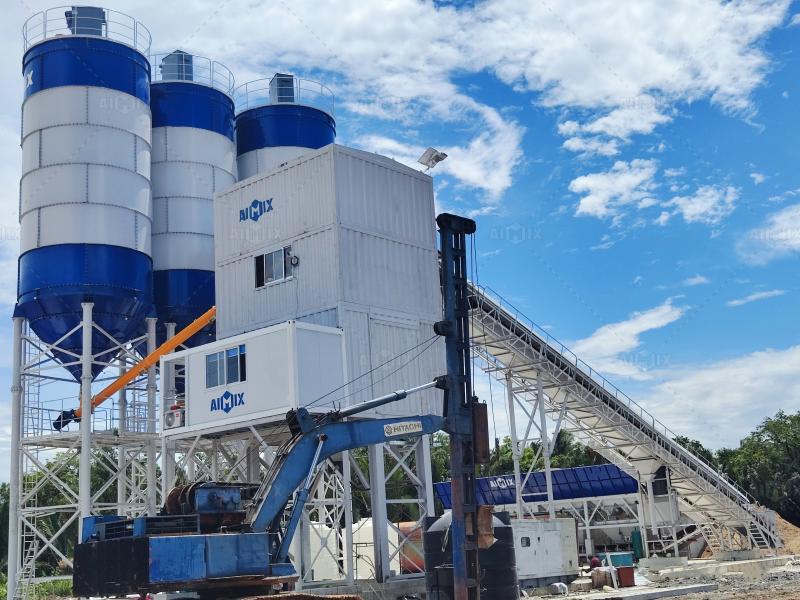In the competitive construction industry, controlling costs is a key factor for profitability and sustainability. For companies and investors exploring how to start a concrete plant, resource management plays a decisive role in determining both short-term efficiency and long-term returns. Whether the plant is located in emerging markets like the Philippines or developed regions like Malaysia, optimizing resource use—across energy, materials, labor, and logistics—can significantly reduce the overall concrete batch plant cost while enhancing productivity and product quality.

Understanding the Cost Components of a Concrete Batch Plant
Before exploring ways to reduce expenses, it’s essential to understand what contributes to the total concrete batch plant cost. Typically, the cost structure includes:
-
Initial investment: Land acquisition, plant setup, machinery purchase, and installation.
-
Operational expenses: Power consumption, raw materials (cement, aggregates, water, admixtures), and manpower.
-
Maintenance and repairs: Regular upkeep to ensure optimal plant performance.
-
Transportation and logistics: Material supply and concrete delivery to job sites.
For investors or contractors looking into how to start a concrete plant, understanding these elements provides a foundation for strategic planning and efficient allocation of resources.
Material Management: Reducing Waste and Improving Mix Design
Raw materials account for the largest share of the production cost in any batching plant. To minimize waste, companies must implement accurate material measurement and consistent quality control.
Modern concrete batching plant in Malaysia operations often use automated weighing systems and digital batching controls to achieve precise mix proportions. This ensures that each batch meets performance standards without overuse of costly materials like cement and admixtures. Similarly, recycling unused concrete and washing water can reduce material losses while maintaining environmental compliance.
For example, many batching plants in the Philippines have started adopting reclaimed aggregates and water recycling systems to minimize waste. These eco-friendly practices not only reduce operational costs but also help companies meet growing sustainability expectations in the region’s construction sector.
Energy Optimization: Lowering Power Consumption
Energy is another major contributor to concrete batch plant cost, especially for large-capacity plants operating continuously. Efficient energy management begins with choosing the right plant design and power systems.
-
Variable frequency drives (VFDs): These help optimize the motor speed in mixers, conveyors, and pumps, preventing unnecessary power use.
-
Efficient mixing technology: High-efficiency twin-shaft or planetary mixers can reduce mixing time while maintaining quality.
-
Smart scheduling: Running high-power operations during off-peak hours lowers electricity bills.
In regions like Malaysia, where electricity tariffs can fluctuate, these small optimizations can have a significant cumulative effect. Furthermore, some manufacturers are integrating renewable power sources—like solar panels—to offset operational energy needs.

Workforce and Process Efficiency
Labor productivity is another critical factor influencing total concrete batch plant cost. Skilled operators who understand automation systems can reduce errors, speed up production, and minimize downtime.
For entrepreneurs researching how to start a concrete plant, investing in operator training should be a top priority. Many concrete batching plants in Malaysia conduct regular training sessions on software use, safety practices, and equipment maintenance. A well-trained workforce can detect issues early, reducing repair expenses and ensuring consistent output quality.
Moreover, workflow optimization—such as assigning clear responsibilities, digitizing production logs, and using performance tracking systems—can prevent resource bottlenecks and enhance coordination between production and logistics teams.
Preventive Maintenance: Saving Costs Before Failures Occur
Unexpected breakdowns can significantly increase operational costs by halting production and requiring emergency repairs. To address this, successful batching plants in the Philippines often rely on predictive and preventive maintenance strategies.
By using IoT sensors and real-time data monitoring, plant managers can track the health of critical components such as mixers, conveyors, and control systems. Scheduling maintenance during planned downtime not only reduces repair costs but also extends equipment lifespan, directly contributing to long-term savings.
Additionally, establishing a spare parts inventory system helps avoid delays caused by supply shortages, which can be particularly useful in island economies like the Philippines where logistics may take longer.
Logistics and Supply Chain Optimization
Efficient logistics management ensures materials and finished concrete are delivered on time and within budget. This includes optimizing delivery routes, selecting appropriate transportation methods, and coordinating production schedules with project timelines.
For example, concrete batching plants in Malaysia often use GPS-integrated fleet management systems to monitor delivery trucks and adjust routes in real-time based on traffic conditions. This not only saves fuel but also ensures that concrete arrives fresh and within the required slump specifications.
Similarly, in the Philippines, local batching plants tend to establish partnerships with nearby aggregate suppliers to minimize transportation distances, reducing both fuel costs and carbon emissions.

Leveraging Automation and Digital Tools
Automation and digitalization are transforming how resource efficiency is managed. Modern batching plants use advanced control systems that integrate production planning, material tracking, and energy monitoring into a single digital dashboard.
For those considering how to start a concrete plant, investing in automation may seem costly initially, but the return on investment is significant. It reduces labor dependency, minimizes human error, and ensures precise batching—leading to consistent quality and lower rejection rates.
Smart batching systems can also generate performance reports that help identify inefficiencies in real time, enabling faster decision-making and continuous improvement.
Regional Best Practices: Learning from the Philippines and Malaysia
Both the Philippines and Malaysia have seen rapid growth in infrastructure development, prompting increased demand for concrete production. However, each market offers unique insights into cost reduction strategies:
-
In the Philippines, local batching plants emphasize modular setups, allowing easy relocation and reduced land costs for small and medium-scale operators.
-
In Malaysia, emphasis is placed on advanced automation, energy-efficient equipment, and strict quality control systems to ensure consistent production for large-scale urban projects.
These approaches highlight how adapting resource management practices to regional contexts can lead to significant cost advantages.
Conclusion
Reducing concrete batch plant cost is not merely about cutting expenses—it’s about managing resources intelligently. By improving material efficiency, optimizing energy use, training skilled operators, implementing preventive maintenance, and leveraging automation, plant owners can achieve long-term profitability and operational excellence.
For anyone learning how to start a concrete plant, studying successful models in the Philippines and Malaysia provides valuable lessons on balancing investment, technology, and sustainable growth. Ultimately, efficient resource management ensures that a batching plant remains competitive, productive, and profitable in an evolving global construction landscape.